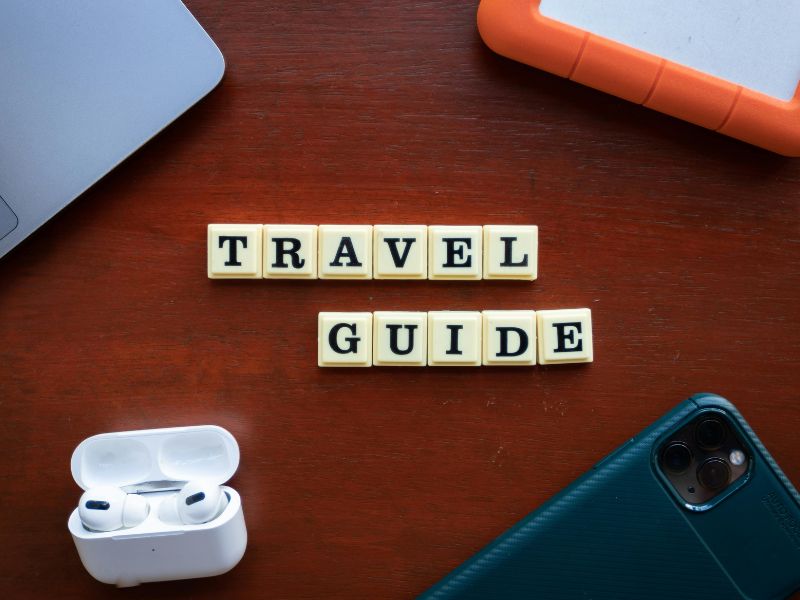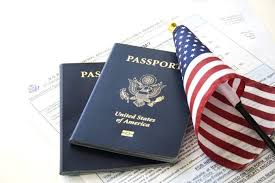Migrating to a new country can be a life-changing decision, but securing the right visa is often a complex process. One of the most common pathways is through a sponsorship visa, where an employer, family member, or institution supports an applicant’s immigration journey. Different countries have varying sponsorship visa requirements, making it essential to understand the eligibility criteria, application process, and legal obligations.
Whether you are seeking employment abroad, reuniting with family, or pursuing studies, having a clear understanding of sponsorship visa requirements will help you navigate the process smoothly and increase your chances of approval.
What is a Sponsorship Visa?
A sponsorship visa is a type of visa that allows a foreign national to live, work, or study in a country with the support of a sponsor. The sponsor can be an employer, a family member, or an institution, depending on the visa category. The purpose of the sponsorship is to ensure that the applicant has financial and logistical support during their stay, reducing the burden on the host country’s government.
Types of Sponsorship Visas
-
Work Sponsorship Visa – Issued when an employer sponsors a foreign worker to fill a job position that cannot be met by local workers.
- Examples: H-1B Visa (USA), Skilled Worker Visa (UK), TSS Visa (Australia).
-
Family Sponsorship Visa – Allows citizens or permanent residents to bring family members to live with them.
- Example: Spouse Visa (UK), Family Sponsorship Program (Canada), IR Visas (USA).
-
Student Sponsorship Visa – Requires a school, university, or government to sponsor the student for study purposes.
- Example: F-1 Visa (USA), Student Visa (Australia), Tier 4 Student Visa (UK).
-
Investor/Business Sponsorship Visa – Offered to entrepreneurs and investors willing to contribute to the host country’s economy.
- Example: EB-5 Investor Visa (USA), Start-Up Visa (Canada), Innovator Visa (UK).
How Does a Sponsorship Visa Work?
- The sponsor submits necessary documents proving financial stability and eligibility to support the applicant.
- The applicant must meet the country’s immigration requirements, such as qualifications, health checks, and background clearance.
- If approved, the visa allows the applicant to reside in the host country under the sponsorship conditions.
A sponsorship visa is an excellent pathway for those seeking employment, family reunification, education, or business opportunities in a foreign country. However, eligibility criteria vary, so it’s essential to understand specific country regulations before applying.
Key Sponsorship Visa Categories
1. Work Sponsorship Visas
A Work Sponsorship Visa is a type of visa that allows a foreign national to work in a country under the sponsorship of an employer. It is typically issued when a company cannot find a suitable local candidate for a job and must hire a foreign worker to fill the position. Employers must meet specific legal and financial obligations to sponsor a worker, ensuring they comply with immigration laws.
Key Requirements for a Work Sponsorship Visa
While specific requirements vary by country, the general eligibility criteria include:
- A Valid Job Offer – The applicant must have a confirmed job offer from an approved employer.
- Employer Sponsorship – The sponsoring company must be registered and authorized to hire foreign workers.
- Skill and Qualification Requirements – Many countries require workers to meet educational and professional experience criteria.
- Labor Market Test (if applicable) – Some countries require proof that no suitable local candidates were available before hiring a foreign worker.
- Salary Thresholds – Many nations have minimum salary requirements to ensure fair wages.
- Health and Character Checks – Background checks and medical exams are often mandatory.
Examples of Work Sponsorship Visas by Country
United States
- H-1B Visa – For skilled workers in specialty occupations (e.g., IT, engineering, healthcare).
- L-1 Visa – For intra-company transfers (employees moving within the same multinational company).
- EB-3 Visa – For skilled and unskilled workers (requires labor certification).
United Kingdom
- Skilled Worker Visa – Requires employer sponsorship and a job in an eligible occupation.
- Health and Care Worker Visa – Specifically for healthcare professionals.
Canada
- Temporary Foreign Worker Program (TFWP) – For employers hiring foreign workers when no Canadian worker is available.
- Global Talent Stream (GTS) – Fast-tracks skilled tech professionals into Canada.
Australia
- Temporary Skill Shortage (TSS) Visa (Subclass 482) – For skilled workers sponsored by an approved employer.
- Employer Nomination Scheme (ENS) Visa (Subclass 186) – Permanent residency for skilled workers sponsored by employers.
Europe
- EU Blue Card (Germany, France, Netherlands, etc.) – Work visa for highly skilled professionals in EU countries.
- General Work Permit (Ireland, UK, etc.) – Requires employer sponsorship and job in a high-demand sector.
Steps to Apply for a Work Sponsorship Visa
- Secure a Job Offer – Apply for jobs with employers willing to sponsor foreign workers.
- Employer Submits Sponsorship Application – The employer must obtain permission from immigration authorities to hire a foreign worker.
- Gather Required Documents – Includes passport, job contract, qualifications, proof of experience, and financial records.
- Submit Visa Application – Apply online or through an embassy/consulate.
- Attend an Interview (if required) – Some visas require an in-person interview at a visa office.
- Undergo Medical and Background Checks – Ensure compliance with health and security regulations.
- Wait for Approval – Processing times vary, but some work visas have priority processing options.
Common Challenges and How to Overcome Them
- Finding an Employer Willing to Sponsor – Use job boards that specialize in visa sponsorship (e.g., LinkedIn, Indeed, government job portals).
- Meeting Skill Requirements – Gain certifications or additional qualifications to increase eligibility.
- Visa Processing Delays – Apply early and ensure all documents are correctly submitted.
- Changing Immigration Rules – Stay updated with official immigration websites for policy changes.
2. Family Sponsorship Visas
Family reunification programs allow citizens and permanent residents to bring close relatives to live with them. Requirements vary but generally include:
- Proof of relationship (spouse, parent, child, or dependent)
- The financial capability of the sponsor
- Meeting residency or citizenship requirements
Examples of Family Sponsorship Visas:
- United States: Family Preference Visas (F2A, F2B), Immediate Relative Visas (IR-1, IR-2, etc.)
- Canada: Family Sponsorship (spousal, parental, dependent child sponsorship)
- UK: Family Visa (Spouse, Partner, Parent)
- Australia: Partner Visa, Parent Visa
3. Student Sponsorship Visas
For international students, some educational institutions or government agencies offer sponsorships. These visas often require:
- Admission to a recognized institution
- Proof of sponsorship (scholarship or family support)
- Sufficient funds for tuition and living expenses
Examples:
- USA: F-1 Student Visa
- Canada: Study Permit with sponsorship opportunities
- Australia: Student Visa (Subclass 500)
- UK: Student Visa (sponsorship by universities)
4. Investor and Business Sponsorship Visas
Some countries provide visa opportunities to investors, entrepreneurs, or business owners. This type of visa often requires:
- A minimum investment threshold
- Business plans and job creation proposals
- Government nomination in some cases
Examples:
- USA: EB-5 Immigrant Investor Visa
- Canada: Start-Up Visa Program
- UK: Innovator Visa, Start-Up Visa
- Australia: Business Innovation and Investment Visa
General Sponsorship Visa Requirements
While specific criteria differ by country, most sponsorship visas share common eligibility requirements:
1. A Valid Sponsorship Offer
- The sponsor (employer, family, institution) must be eligible and meet immigration guidelines.
- Employers must prove they have a genuine need for hiring a foreign worker.
2. Financial Capacity of the Sponsor
- Sponsors must show they can support the applicant financially.
- Family sponsors may need to meet a minimum income requirement.
3. Compliance with Legal and Health Requirements
- Applicants usually undergo background checks, including criminal record verification.
- Health examinations ensure the applicant does not pose public health risks.
4. Language Proficiency
- Some countries require English or local language proficiency (e.g., IELTS for Australia, UK, and Canada).
5. Proof of Intentions
- Work visa applicants must show intent to work in the sponsored role.
- Family visa applicants must prove genuine relationships.
Latest Trends and Changes in Sponsorship Visa Policies
Immigration policies change frequently due to economic conditions, labor market needs, and political decisions. Here are some recent updates:
1. Stricter Employer Sponsorship Rules
- Many countries now require proof that local candidates were considered before hiring foreign workers.
- Compliance audits have increased to prevent visa fraud.
2. Increased Salary Thresholds for Work Visas
- The UK increased the minimum salary requirement for Skilled Worker Visas.
- Canada’s work visa programs now emphasize high-demand occupations.
3. Digitalization of Visa Applications
- Most countries now allow online applications for faster processing.
- Some, like Australia and Canada, have introduced digital tracking systems.
4. Priority for In-Demand Jobs
- Healthcare, engineering, and IT professionals receive easier visa pathways in the UK, Canada, and Australia.
How to Apply for a Sponsorship Visa: Step-by-Step Guide
Step 1: Determine Your Eligibility
- Research the visa options in your desired country.
- Ensure you meet work experience, education, and financial requirements.
Step 2: Secure a Sponsor
- Employers must issue job offers and complete the necessary documentation.
- Family sponsors must submit proof of relationship and financial support.
Step 3: Gather Necessary Documents
- Passport and identification
- Sponsorship letter from employer/family
- Proof of qualifications and work experience
- Health and character certificates
Step 4: Submit the Visa Application
- Apply through the country’s official immigration website.
- Pay applicable fees and schedule interviews if required.
Step 5: Attend Medical and Background Checks
- Immigration authorities will verify your health and legal status.
Step 6: Wait for Processing and Approval
- Processing times vary; some visas take weeks, while others take months.
Common Challenges and How to Overcome Them
The process of applying for a sponsorship visa can be difficult, and many candidates encounter obstacles that could cause their application to be delayed or even denied. The following are some of the most typical problems and workable fixes for them:
1. Delayed Processing Times
Challenge:
Visa processing times can vary significantly depending on the country, type of sponsorship visa, and volume of applications. Delays can disrupt travel plans and job opportunities.
Solution:
- Apply as early as possible to allow for unexpected delays.
- Ensure all required documents are correctly submitted to avoid additional requests from immigration authorities.
- Track application progress through official government portals and be proactive in responding to any queries.
2. High Financial Requirements
Challenge:
Many sponsorship visas require proof that the sponsor or applicant has sufficient funds to cover living expenses. Some applicants struggle to meet the minimum income thresholds.
Solution:
- If applying for a work visa, negotiate with your employer for relocation assistance or financial support.
- Family sponsors should explore government assistance programs that may reduce financial burdens.
- Provide clear and verifiable financial documents, including bank statements, tax records, or employment contracts, to meet financial proof requirements.
3. Difficulty Finding a Sponsor
Challenge:
Employers and family members may be hesitant to sponsor an applicant due to legal responsibilities, costs, or eligibility restrictions.
Solution:
- Job seekers should target employers with active sponsorship programs and industries experiencing labor shortages (e.g., healthcare, IT, engineering).
- Family sponsors should ensure they meet financial and residency requirements before applying.
- Use professional recruitment agencies or immigration consultants to connect with potential sponsors.
4. Visa Denial Due to Insufficient Documentation
Challenge:
Missing, incorrect, or fraudulent documents can lead to application rejection. Even minor errors in paperwork can cause delays or refusals.
Solution:
- Carefully review the visa checklist provided by immigration authorities and double-check all required documents.
- Submit accurate and up-to-date records, including employment contracts, proof of relationship (for family visas), and financial statements.
- Seek professional assistance from immigration consultants or lawyers to avoid mistakes in the application.
5. Language Proficiency Requirements
Challenge:
Some countries require applicants to prove language proficiency through tests like IELTS, TOEFL, or equivalent exams. Many applicants struggle to meet the required scores.
Solution:
- Prepare well in advance by taking language courses or practice tests.
- Retake the test if necessary and aim for the highest possible score to improve visa approval chances.
- Explore alternative visa options that may have lower language requirements.
6. Meeting Health and Character Requirements
Challenge:
Applicants with certain medical conditions or criminal records may face visa refusals or additional scrutiny during the application process.
Solution:
- Undergo medical examinations early to address any potential health concerns.
- Obtain official clearance certificates and be honest about any previous legal issues.
- If required, provide additional supporting documents or explanations to immigration authorities.
7. Changing Immigration Policies
Challenge:
Visa policies and requirements often change due to government regulations, economic conditions, or labor market needs.
Solution:
- Stay updated with official immigration websites and news sources.
- Join expat forums or consult immigration experts to get real-time insights on policy changes.
- Be flexible and explore alternative visa options if regulations become stricter for your initial choice.
Even though applying for a sponsorship visa might be difficult, your chances of success can be greatly increased by being well-prepared, providing reliable evidence, and keeping yourself updated. Candidates can more easily manage their immigration journey and fulfill their dream of moving overseas by anticipating and proactively resolving probable hurdles.
Conclusion
Opportunities for employment, family reunion, or study may become available with a sponsorship visa. For an application to be accepted, it is essential to comprehend the requirements for eligibility, supporting evidence, and legal obligations. You may increase the likelihood that your application will be approved by studying the most recent immigration laws, making sure that all requirements are met, and crafting a compelling application.
Your immigration journey can be made easier and more fulfilling with careful preparation and expert advice, regardless of whether it is sponsored by your job, a family member, or an organization.






